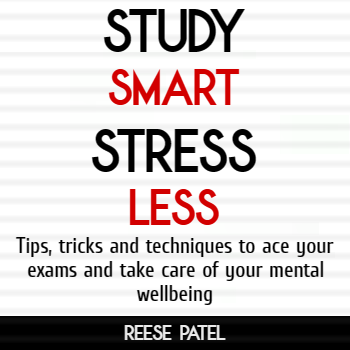A brief guide to mindfulness
(≈10 min read)

‘Mindfulness’ is a term you’ve no doubt heard countless times. Contrary to popular belief, it’s not just for solitary monks who live in the mountains. You don’t have to seclude yourself from society, wear next to no clothes and meditate for thirteen hours a day. Even if you only have a spare fifteen minutes every day, that’s enough to reap the rewards.
Numerous scientific and psychological studies have been conducted in recent times and almost all are in agreement that practising mindfulness can have significant benefits for our mental health.
Some research has suggested mindfulness can benefit sleep, chronic pain, our immune system, our memory and even our chances at weight loss. Other research analysed 39 studies on mindfulness and found their results supported the use of mindfulness based therapy for mental disorders such as anxiety and depression. So although it’s pretty clear that mindfulness is good for you…what exactly is it?
Mindfulness, to put it simply, is the act of being fully engaged and completely present with whatever it is you’re doing. The idea is to bring awareness to your “here and now” experience, with curiosity and inquisitiveness.
But why would ‘being present’ help you? And how can you actually practise it?
Why is mindfulness useful?
Have you ever noticed that your mind has a mind of its own? You sit down on the sofa and suddenly you feel this annoying urge to go to the fridge and get a beer. Where did this urge even come from?
Well the truth is… you don’t know. As despairing as it might sound, you don’t exactly choose your desires. Let me explain why.
Imagine you’re in a supermarket and have to choose between two drinks, say apple juice and orange juice. You’d agree you can freely choose either drink. So let’s say you choose orange juice.

The question is: although you freely chose the orange juice, did you choose to want the orange juice more than the apple juice? Think about that for a second. No matter how hard you tried, you couldn’t have decided to want the apple juice more than the orange juice.
Sure, to disprove this theory, you might have taken the apple juice but then your want to disprove the theory would have been greater than your want to pick the drink you like most. And is that something you can control?
What I’m trying to say is that, yes, you can do what you want, but that doesn’t mean you can choose your wants. One of the purposes of mindfulness is to ensure those unconscious wants and desires don’t control you.
Since the thoughts and desires you have are in your mind, it’s only natural for you to take ownership of them. After all, they are your thoughts. But just because you have a thought or desire, you don’t have to take ownership. The rational portion of your brain didn’t ask for that thought or desire to be there; it in a sense bubbled up from a deeper more primitive part.
William Irvine, professor of philosophy and proponent of stoicism, uses the ‘roommate analogy.’
He suggests that living with this primitive subconscious mind that provides intrusive thoughts is like having a roommate who keeps telling you what you should think, want and feel. A living nightmare.
You might succeed to get the roommate to shut up for a bit but soon they’ll be right back at it, making new suggestions. If you actually had a roommate like this, not only would you lose your sanity, but you’d presumably move out if they refused to negotiate. The problem is, you and this roommate are stuck together in your skull until your very last day on Earth.
That’s where mindfulness comes in – you need to devise a strategy to deal with this roommate situation because exercising willpower to shut up your roommate constantly is too exhausting.

Mindfulness enables you, in the analogy, to know the dynamics of the situation better. By practising mindfulness you can learn to cultivate a better relationship with this roommate and realise that although he/she can tell you what to think, you don’t have to listen.
Mindfulness enables you, in the analogy, to know the dynamics of the situation better. By practising mindfulness you can learn to cultivate a better relationship with this roommate and realise that although they can tell you what to think, you don’t have to listen.
You don’t have to take ownership of the thoughts this roommate provides. By using the rational part of the mind you can better deal with the sub-rational part (the roommate).
Despite there being a general framework around which mindfulness tends to revolve, there are actually quite a number of ways to practise it. It’s important to emphasise that no way is the ‘right way’ and you’ll probably have to undergo the trial and error process numerous times to settle on the way that works best for you. In this article, I’m going to outline some of my favourites.
The general principle – mindfulness everywhere
Ultimately, mindfulness can be practised anywhere, but I’ve found from personal experience (maybe just because I’m insanely introverted) that it’s much easier to practise alone. You could practise it when you’re out for a walk, when you’re staring out your bedroom window or even just sitting comfortably in bed.
The basic aim of mindfulness is for you to become increasingly aware of your surroundings and the sensations on the different parts of your body in context with that surrounding.
Let’s say for example you’ve gone for a walk. Instead of thinking about why you said ‘have a good time’ instead of ‘bye’ to that boy or that disastrous presentation you did earlier today, bring your awareness to the here and now. Run through each sense, asking yourself questions.
How does the wind feel against your skin? How does your skin feel against the texture of your t-shirt or socks or trousers? What sensations can you feel in your body when you breathe in the air? Is it cold or warm? Become aware of your breath, of the air hitting the back of your throat and filling your stomach – how does that feel?
What noises can you hear? The sound of cars? Of trees waving in the wind? Of a couple arguing? Of birds singing? Pay close attention.
What can you smell? Freshly cut grass? Litter? Dog excrement? Don’t attach an opinion to that smell. Just simply observe. Inhale through your nose and be aware. Being aware means there is no reaction, just observation.
Look around you. Just observe. What kind of things can you see? The trees waving? The ripples in a puddle? The moon in the sky? A kid hugging a lamppost? Just watch. If a thought arises, that’s ok. Don’t try and push it away. Just be aware of its presence and sit with it until it passes.
These are obviously just a random set of questions I’ve come up with but you could ask similar kinds of questions in any setting (obviously in your head).
We can all agree that brushing your teeth is potentially the most boring thing humans ever invented. But unfortunately, it’s kinda necessary. Mindfulness can make it tolerable. As you’re brushing, pay close attention to how the toothpaste tastes in your mouth and the texture of the brush and the smell of the toothpaste and how the vibrations of the electric toothbrush feel like in your hand and the sound of the brushes hitting your teeth. Simply bring your attention to the present moment.
The beauty of mindfulness is that it isn’t restricted to one specific domain. All we’re trying to do is learn to observe the world in all its beauty without our prejudices, opinions and beliefs interfering. And once you learn to adopt a heightened sense of awareness about the world, it simultaneously enables you to have a heightened sense of awareness of yourself.
Mindful meditation
Some people prefer to be still when they practise mindfulness and that’s when meditation can be especially useful.
The idea of mindful meditation is to reach a state of stillness and calm, where you’re simply a passive observer. You’re aware of the sensations in your body, from your inhalation and exhalation, to your heartbeat, to the rise and fall of the stomach and there is no judgement or opinion; just intense observation.
There’s this widespread view that meditation is somehow the act of ‘not thinking’. As peaceful as that sounds, meditation is not control of thought or even suppression of thought. As Jiddu Krishnamurti says in his book ‘Freedom from the known’:
“Meditation is to be aware of every thought and of every feeling, never to say it is right or wrong but just to watch it and move with it.”
And goes on to say:
“Meditation is a state of mind which looks at everything with complete attention, totally, not just parts of it.”
When you’re being mindful, you’re devoting your complete attention to the here and now; your mind has emptied itself of the past and the possible future.
Some people initially find it easier to practise mindful meditation under the guidance of a voice. There are plenty of guided mindfulness YouTube videos online. If you feel like these might be beneficial, I’d recommend trying out various channels until you settle on a voice you feel the most comfortable with.
One of the first things you might notice when engaging in this form of mindfulness is the tendency for thoughts to intrude and disrupt the cycle. When this inevitably happens, and you notice yourself thinking about why you thought it was a good idea to paint your house orange, don’t try and repress but instead acknowledge the thought until it passes on, like a cloud passing by in the sky, and then return to your breath or to whatever it is you are directing your attention towards. The more you practise, the better you’ll get.

The ultimate idea of mindfulness is, to outline a Buddhist idea, for your thoughts “to become like robbers in an empty house”. These pesky robbers cannot affect you or hurt you or take anything away from you. You should instead view your thoughts as a kind of consistent and constant background radio noise that you can choose whether or not to pay attention to.
You can tune in for the helpful thoughts and just allow that blur to continue for the unhelpful ones. Meditation, mindfulness and becoming simply aware of thoughts and emotions as opposed to trying to repress them or allowing them to control you can all help in this journey to improved contentment.
The first time experience
Another way to help you practise mindfulness is by doing any task as if it were the first time you were ever doing it.
Imagine you’re reading a book. If you’d never read a book before, you’d probably feel the pages and their texture, smell the book (again I don’t recommend doing this stuff in public), run your hands over the cover, notice how the words on the page flow. Instead of having your thinking-self dominating, you allow your body to revert to ‘observing mode’.
When you’re having a shower, for example, don’t take it for granted. Feel the water on your skin, feel how the droplets roll down your legs, feel how different parts of your body feel warm and cold, listen to the sound of the water hitting the ground, engage the senses.
The idea of pretending it’s the first time you’ve ever encountered this thing before is to simulate the same kind of wonder and gratitude that you experience when you genuinely do witness something fascinating for the first time.

Fascination is a feeling that sadly fades and so although a Ferrari might feel amazing for the first three weeks or so, eventually the novelty will disappear and you won’t be imbued with that same wonder you once had.
This technique offers a way of bypassing this process of accustomisation and instead helping us to remember just how fascinating and amazing the small things in this world really are.
The last time experience
A technique that might help you to be more present whilst doing activities is known as the ‘last time technique’. I’m sure you’re wondering, after the ‘first time technique’, what this technique could possibly involve.
Every time you’re about to engage in an activity, let’s say for example going to the gym, remind yourself of two things:
1) That there will be a last time you ever do this activity
And:
2) That there is a possibility that this time, right now, is the last time you will ever do this activity
For all you know, tomorrow you might be involved in a terrible accident or be diagnosed with a certain kind of illness that strips your ability to move as you currently do. As depressing as it is to think about, this time in the gym may very well be your last. Now take a moment to think about how this consideration might change your workout?
If we were able to do things over and over forever, we would lose appreciation for them entirely. It’s the finitude of life; the fact that everything comes to end that motivates us to do painful things. The procrastination that would ensue if life was infinite would be immeasurable – we could always do that painful activity tomorrow.
Now obviously this thought that there’ll be a last time you ever go to the gym and that this could very well be that last time is not a thought any sane person wants to consider. Surprisingly, it’s not exactly pleasant to remind yourself of the fact that one day you’ll turn into a vegetable, and that you don’t know when that day will come.
But by actively reminding yourself of this possibility before engaging in that painful activity, you’ll be way more engaged in the activity and intrusive thoughts will be much less frequent.

Imagine for example the difference between an average person eating a meal and a prisoner eating that same meal but knowing it is their last. How might the experience differ for each person? Who would appreciate the food more and be more present whilst eating? The idea is to transfer this idea of active engagement to any activity that you’d really want to be actively engaged with.
Using mindfulness to help with anxiety and addiction
This might sound strange, but anxiety, at its core, is a very similar experience to excitement. The physiological responses that take place in the body with both emotions are near identical. In fact if you took the raw sensations you were feeling when experiencing anxiety without any thought attached to those feelings, those sensations would be similar to if you were say waiting to board a rollercoaster. The same sensations in different contexts can result in significantly different emotions.
Feelings and sensations themselves are not dangerous. It’s when a thought attaches to a feeling that it can cause damage. The consistent practise of mindfulness can help train you to simply recognise thoughts as words that you don’t have to pay attention to.
As I mentioned, the ideal scenario is for your thoughts to become like ‘robbers in an empty house’, for those thoughts to be a mere background radio noise that you can choose whether or not to focus your attention on.
If a thought is unhelpful and serves solely to exacerbate your anxiety, then you can simply acknowledge that thought is there, acknowledge that it is just a thought that you can choose whether or not to listen to, acknowledge that it is not helpful and simply wait for that thought to move on.
The idea is not to repress unhelpful thoughts and push them away. They’ll only come back stronger. Instead, acknowledge the existence of the thought, decide whether it’s helpful or not and if it’s not helpful, wait until it naturally passes.
Addiction and anxiety are both heavily dependent on thoughts, primarily faulty thoughts. By consistently practising mindfulness and reinforcing the idea that your thoughts have no bearing on your actions, it can help you to feel liberated from your mind.
The psychological technique this kind of mindfulness revolves around is called ACT therapy. This stands for acceptance and commitment therapy. This kind of therapy encourages people to embrace their thoughts and feelings rather than fighting or feeling guilty for them.
If in spite of everything you’re trying, you’re still struggling, please seek external help. Ideally, try and find a psychologist or therapist near you, that you can discuss your feelings with. But I get that not everyone can afford a psychologist, and so if you the main thing is to just talk to people – let it out. There are plenty of support groups out there that might help and plenty of numbers you can phone if you’re feeling particularly down. Just don’t struggle alone!
The Wim Hof technique
The Dutch extreme athlete, Wim Hof has broken sixteen world records, most of which in some way related to cold exposure. Many have questioned his status as a human, but he’s a firm believer that he’s not special. Wim believes that exposure to cold combined with breathing techniques can help to relieve forms of mental illness such as anxiety and depression as well as serving to improve the immune system to counter physical illness and viruses.
His motivation to help people and evoke real change in other’s lives came when his wife tragically committed suicide in 1995, leaving Wim with 4 children to raise himself. In a documentary with Vice, Wim said:
“Where I got peace was in these breathing exercises, swimming outside in the cold.”
His aim from then was to translate these methods he’d learnt and acquired to the modern world to prevent as far as possible what happened to his wife happening to others.
To note just two of the insanely ridiculous things this man has done, he’s spent 1hr 53min with full body contact with ice as well as running a full marathon in the Arctic Circle in temperatures close to -20°C, wearing only a pair of shorts. I know it might be tempting, but please don’t try to attempt these things yourself.
One of the main things Wim encourages us all to do is to take cold showers.
Research has shown that cold showers contribute to the reduction of stress. Each time you have a cold shower, you are forcing your body to deal with a small amount of stress. This gradual process of encouraging your nervous system to deal with stress helps in situations beyond the shower. This process is known as ‘hardening’.
But what do cold showers have to do with mindfulness?
Well with a traditional warm shower, your mind is always active – ruminating about that presentation tomorrow or whether you got that job yesterday. There is no time, to simply stop and experience the present moment just as it, to simply become aware of the sensations on your skin and have all your attention on what you are feeling right now.
Cold showers, in a sense, compel you to do this.

When you first go into a cold shower, the first thing you’ll notice is that you’re gasping for air. At this point you may begin to question why you were sane enough to do this. To counteract the perceived lack of oxygen, you are forced to breathe deep. You’ll also notice your mind starts becoming vacant as you are forced to simply experience the raw sensations of cold on your skin and notice how it feels for you to breathe in and out.
Your brain reverts to a kind of survival mode, where intrusive thoughts about the past and future almost disappear entirely.
That’s why for me, cold showers act as a kind of meditative experience. To counter the pain, you don’t try and fight it. You just acknowledge its existence and learn to breathe through it, become at one with the present moment in order to endure the cold.
One rule to always bear in mind when taking cold showers however is never to force. If you feel like you need to get out then get out. Don’t be crazy. Listen to your body. Generally, cold showers are very safe but if you have heart disease or conditions, high blood pressure, or are ill or feverish then it would be best to avoid.
Soren Kierkegaard – “The highest and most beautiful things in life are not to be heard about, nor read about, nor seen but, if one will, are to be lived.”









